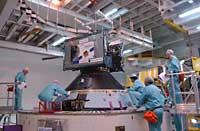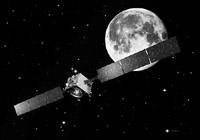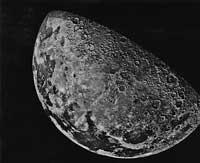Europe to the Moon
2003/09/24 Kortabarria Olabarria, Beñardo - Elhuyar Zientzia

After a journey of 16 months, it is located in the area of the Moon in an elliptical orbit. It will approach a maximum of 300 kilometers and will distance to 10,000 kilometers. They will have it in orbit for two and a half years. The SMART-1 project is the prototype of future scientific missions. It is a small, low-cost mission -100 million euros- that will conduct innovative experiments on the Moon. With these experiments, the probe will investigate the formation of the Moon, try to find ice, test new telecommunications systems and analyze the mineral composition of the earth's surface.
The SMART-1 project aims to be the pioneer of a new philosophy, spacecraft with low weight technology. The SMART-1 probe itself is a good example of this, as it has a weight of 366 kilos and a volume of one cubic meter. In fact, in the journey of this probe the travel system itself is more important than the experiment.

Along with light technology, the probe incorporates a special propulsion system, electric ion propulsion. The xenon gas will be the propeller and the solar panels will be the source of electric energy. The system is installed in a ceramic ring shaped camera. The ring chamber is small –10 centimeters– and is surrounded by magnets. It has a cathode to one side, an apparatus that generates electrons. Electrons cross the chamber and join the magnetic field. As the xenon gas enters the other side of the chamber, more xenon ions and positively charged electrons are formed. These electrons are used again to accelerate the ions. Ions, by the influence of magnetic field electrons, come out of the chamber and cause propulsion. Propulsion is barely noticeable, but as it lasts a long time, unlike chemical engines, the length increases the speed of the probe.
During the journey, the SPDE and EPDP tools will cover all data from the propulsion system. So far, this propulsion technology has been used only by NASA's Deep Space probe. In the future, the same technology aims to carry out a series of missions, including BepiColombo for Mercury and Solar Orbiter for Eguzki.

Gai honi buruzko eduki gehiago
Elhuyarrek garatutako teknologia





